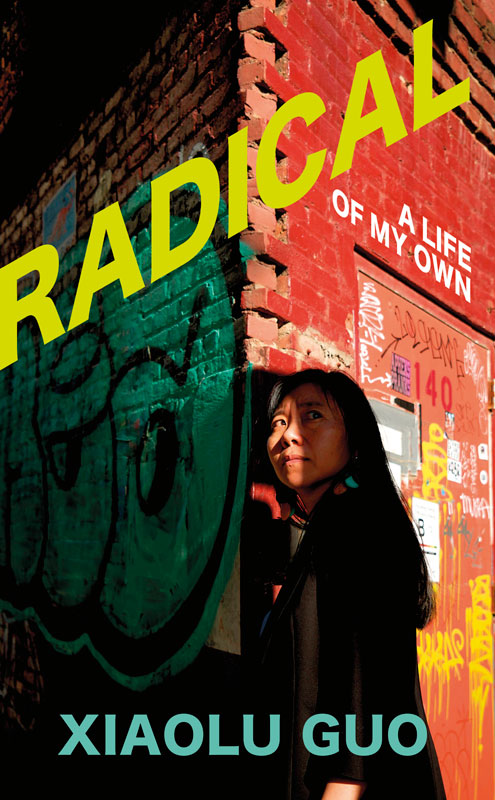The books on this list explore the challenges faced by women from diverse backgrounds as they fight against patriarchal structures such as religious sects, border controls, and even humanity. Their battles take place across wide-ranging landscapes as territories act simultaneously as sites for confinement, flight, connection, creativity, and evolution. The women in these stories use a range of tools for their different survival strategies: their minds, their landscapes, novels, bodies, flora and fauna, disguise, dissociation, invisibility, time-travel, and transformation.
Lorena Cabnals, an indigenous activist, asks, “How can we fight for the right of women to choose what to do with her body without ensuring a space that body can survive in?” These books explore the ideas of territorial indigenous feminism and the issues faced by Black, Indigenous, and minoritized women fighting for sites of safety. Territorial feminism is at the heart of my book, Fire Rush, inspired by my own experiences of seeking safe spaces as a child and young woman trying to escape male violence.
Below are books about women writing about women fighting for land, space, and agency over their bodies as a form of revolution.
Sorrowland by Rivers Solomon
“In the mud, the border between land and body disappeared.”
Sorrowland is an alternative geography, a speculative landscape based on territory stewarded by Indigenous communities, Tonkawa, Caddo Nation, Lipan Apahce and Plains Nations. 15-year-old Vern is an albino intersex girl who gives birth to twins in a forest as she escapes the Black cult that is Cainland. She is a fugitive trying to escape an institution, trauma, and history. In her quest for survival, she questions where she belongs, where she is running to, and whether Africa is her land. Finding no answer, she seeks a site of safety deep within the soil. “Our roots are in the dark, the earth is our country.”
She fights for her and her children’s survival, running from Cainland and the men who control it, moving between three diverse terrains: Kingdom Plantae, Kingdom Fungi, and Kingdom Animalia, becoming transformed by each and forging a symbiotic relationship that is central to her survival.

Fugitive Feminism by Akwugo Emejulu
What if “human” cannot and should not be claimed? What if to be human required a rejection of that which is considered human? This is the premise of Akwugo Emejulu’s book. Here, Emejulu talks about the first time she realized that as a Black woman she is non-human, existing on the borderlands.
Black women are fleeing humanity, seeking safety in another kind of way; they are fighting for survival in the liminal space of being, outside of humanity, but trying to stake a claim within it. Fugitive Feminism tries to find ways of surviving outside of the binary of human and non-human, woman and man, Black and white; finding a way into a beyond-human future, re-birthing into a new way of being.
This is no Afro-pessimistic book. Emejulu sees this act of survival as a means of transformation not only for women but for the planet, decentering the human as a way of being kinder to the Earth, noting, “Being unmoored from humanity opens up possibilities.” She says this is a book of refusal, of refusing capture in time and space.

Radical: A Life of My Own by Xiaolu Guo
“The only refuge is creative work – making art.”
This is Xiaolu Guo’s superstructure of a memoir drawing on language, place, cultural references, and life story. A Chinese immigrant writer and academic in New York trying to move to the beat of liberation, to create sites for creativity and freedom in between memories of the distant Eastern landscapes of her past, her present life in New York, and a future that awaits in London, where her child and the child’s father are.
Is New York a hostile place or a place of safety? She walks freely in parks and unknown areas of the city, but is she ever on safe ground, ever completely sure of herself and who she is within it?
Survival doesn’t always have to be an intense physical fight. This is on the surface a more subtle fight with the self, with desire, with what it is to be a woman and a mother and an artist. It is about the importance and survival of the creative life, which for many women may be the only landscape of freedom left to them. A place in which many women do not have the privilege to cultivate and inhabit.
This book grapples with an existential struggle, with the unfurling of the self in a world of distorted mirrors. When we untether our histories from our yearnings for creatively fertile futures, what remains? How do we get to where we want to be and what is lost in this (re)routing?
Guo delicately dances with the fragmented concepts of diasporic women’s lives and the search for congruence between the deep interior landscapes and the perceptible realities of the lives we live. A terrain for us to claim and be sovereign in is the skin we live inside of, the spirit that holds us, and the narratives we live.
Of Women and Salt by Gabriela Garcia
The matrilineal-linked stories in this collection range across a 19th-century cigar factory, plantations, and modern-day detention centers. Spanning Cuba, Mexico, and Miami, Garcia presences fugitives, martyrs, widows, orphans, and women who live through revolutions, domestic violence, childhood abuse and the world(s) of “shadowy political figures.”
Survival in these stories is about making the right choices, even as loss and gain become obfuscated and difficult to untether from each other. Each choice is accompanied with a familiar strangeness: alienation, unbelonging, communion, refusal. Whether to go back across the border and try to get into the United States again, or face the risks of being labeled as repeat offenders. Or go back to their homeland and face hunger and death, or stay in the detention center. Or, as one woman considers, whether she should make her body a vacation in order to make a German man marry her so she can have sanctuary in another country. “It didn’t even matter who lay beneath me–it was my own smell and heat and indecency that drove me…”
And when they return to the lands of their foremothers, they are seeking a place of belonging, a womb of safety, “a kind of connective tissue.” But this connective tissue, this thread from the past to the present, isn’t enough.
The isolation and strangeness of detention centers with smiling zebras printed on the walls. The alienation of being in strange worlds where oil stacks burn in the distance and they are the only ones there along with oil workers so that Gloria thinks “We must be families made of bird.”
Wayward Lives, Beautiful Experiments by Saidiya Hartman
The young Black women in this book are fighting for freedom, for complexity, for beauty, for subjectivity, for contradiction, for love, for themselves. Hartman is untethering them from the archives from which they have been contained, classified, and constrained by the surveys of sociologists, rent collectors, social workers, and parole officers.
Hartman is fighting for their survival. She wants them to live through art. She exhumes the real lives of these women from their musty case files. Reduced by a cold, institutionalized gaze to criminality, pathology, deviance. She writes to transform them into radicals, anarchists, and trendsetters.
We encounter these young women as they move through the slums, on street corners, and foul alleys. Realms of “excess and fabulousness.” These women are hungry, lack water to wash. The questions in their heads: “Can I live?”
Newspaper articles confuse the girls, getting their names wrong. They become interchangeable, robbed of their subjectivity, not even afforded names or personhood.
The writer traces the footsteps of one young girl who is photographed naked on a sofa, languid and liberated in this moment. She traces her migration from Philadelphia to New York, the streets of the Seventh Ward, onto Tenderloin and then Harlem. Across the Black ghetto, a girl on the threshold of a new era, through epidemics of rape and lynching, to the otherwise possibilities of a new world. She was a girl trying to survive brutality and deprivation. A beautiful girl, her beauty intimating pathways to liberation, to experiment with what it is to live otherwise lives. Freedom as an improvisation with the limits of the ghetto. These characters create possibilities within (and outside) the confines of their lives. This becomes the radical act of survival.
The Vegetarian by Han Kang
”Her body is her only refuge.”
The Vegetarian explores gender relations and power dynamics within a Korean family. The novel is told in three parts, from the perspective of the protagonist, Yeong-hye’s husband, brother-in-law, and sister. Yeong-hye herself is silent.
Yeong-hye does everything she can to live her life the way she chooses, to be free from the violence of her husband and the misogynistic structures of the world. To escape this, she seeks a life of arboreality. Through this, she transforms into a tree, bordering different states of being because she cannot survive in the world as it is.
Unlike some of the women in the other books on this list, Yeong-hye does not fight back physically. This book is about survival as a radical pacifist act that challenges the masculine ways of fighting and rebelling. Yeong-hye refuses to move to the rhythms of patriarchy, instead, she listens to the tempo of trees, surrendering to their pace. She uses the earth as medicine, finding power in entangled roots of trees.
Mama Amazonica by Pascale Petit
“There are rapids ahead the doctors call ‘mania.’”
Mama Amazonica is a collection of poetry where Pascale Petit writes about her mother who was in a psychiatric ward. Petit places her mother in the Amazon rainforest, transforming her into Jaguar Girl, Hummingbird, and other mythical creatures as she explores the contours of her mother’s troubled mind, paralleling the survival of her mother and that of the natural environment. How can one survive without the other? The rainforest and the deep recesses of the human mind become entangled, boundaries blurred.
Like most of the other writers, Pascale Petit deploys radical writing techniques, exploring mythical landscapes to illuminate the landscapes inhabited by women in their quest to survive.
“Beetles with intricate cameras mounted on their carapaces record every harm that comes to her in diamantine detail.” It is through extraordinary images and fine detail such as this that Petit interweaves mind, body and land as her mother “swims through the star-splinters of a mirror,” and where “electric eels pressed to her scalp can vanish into backwoods where no one can reach her.”
The post 7 Books About Women Fighting for Survival appeared first on Electric Literature.










